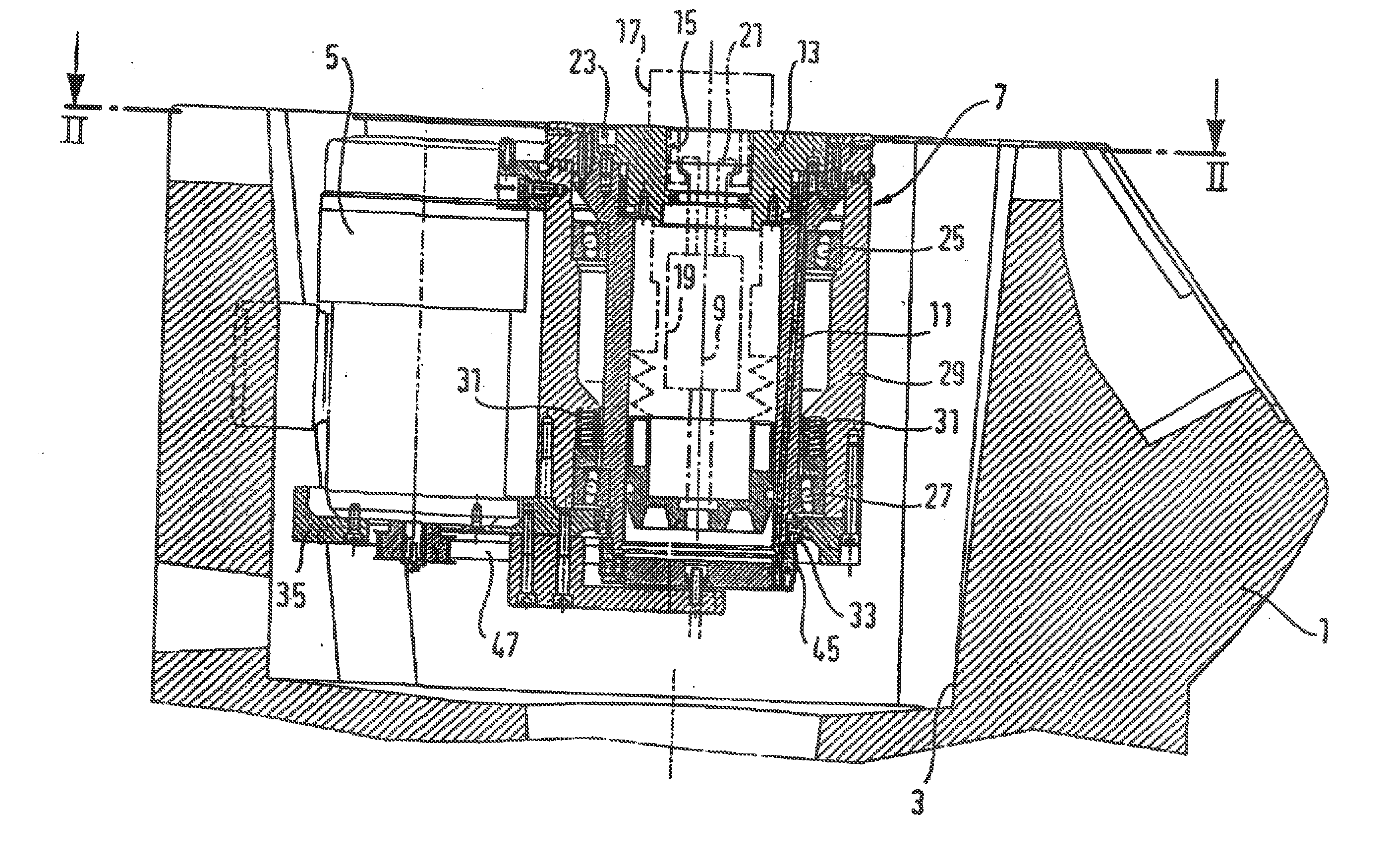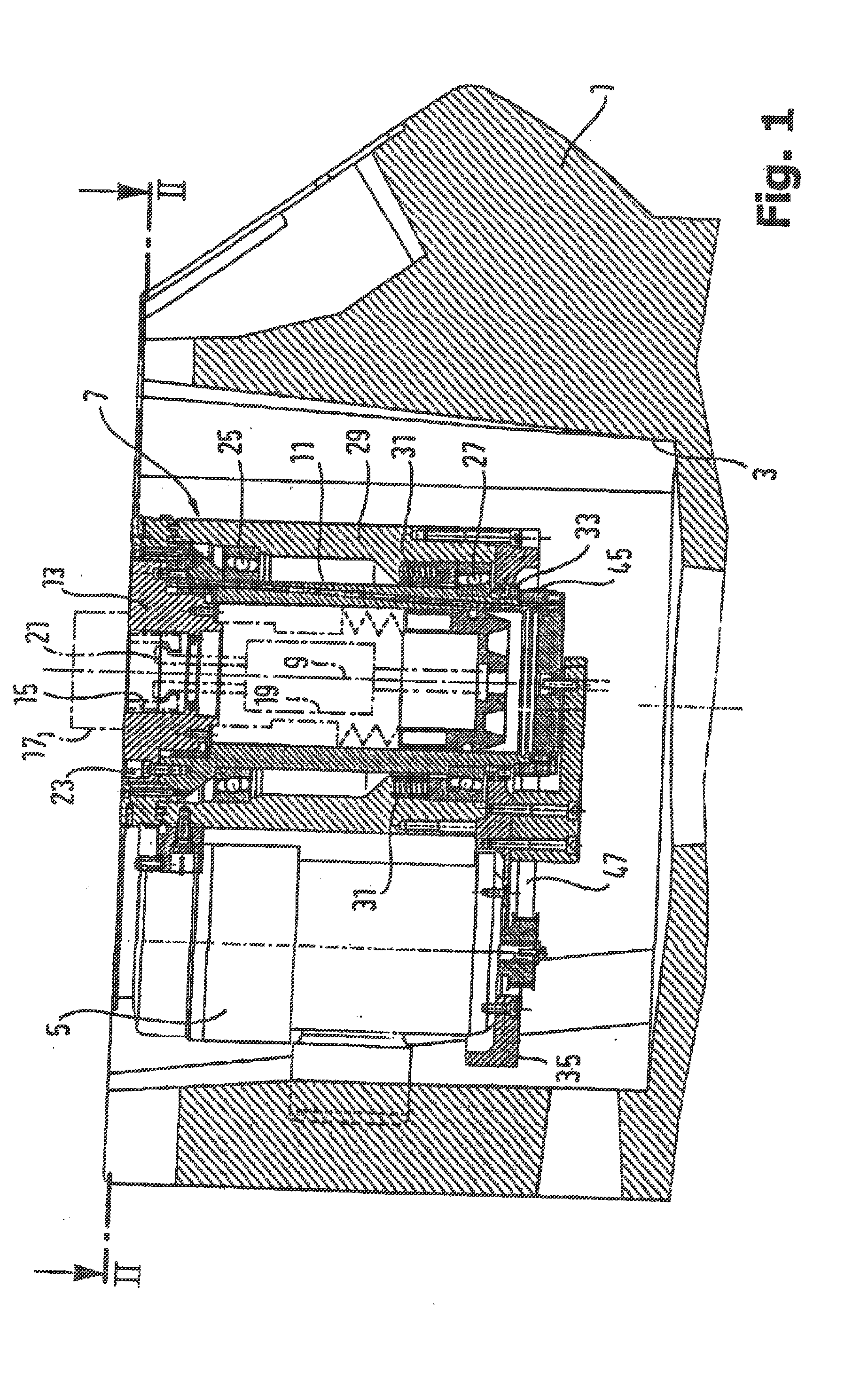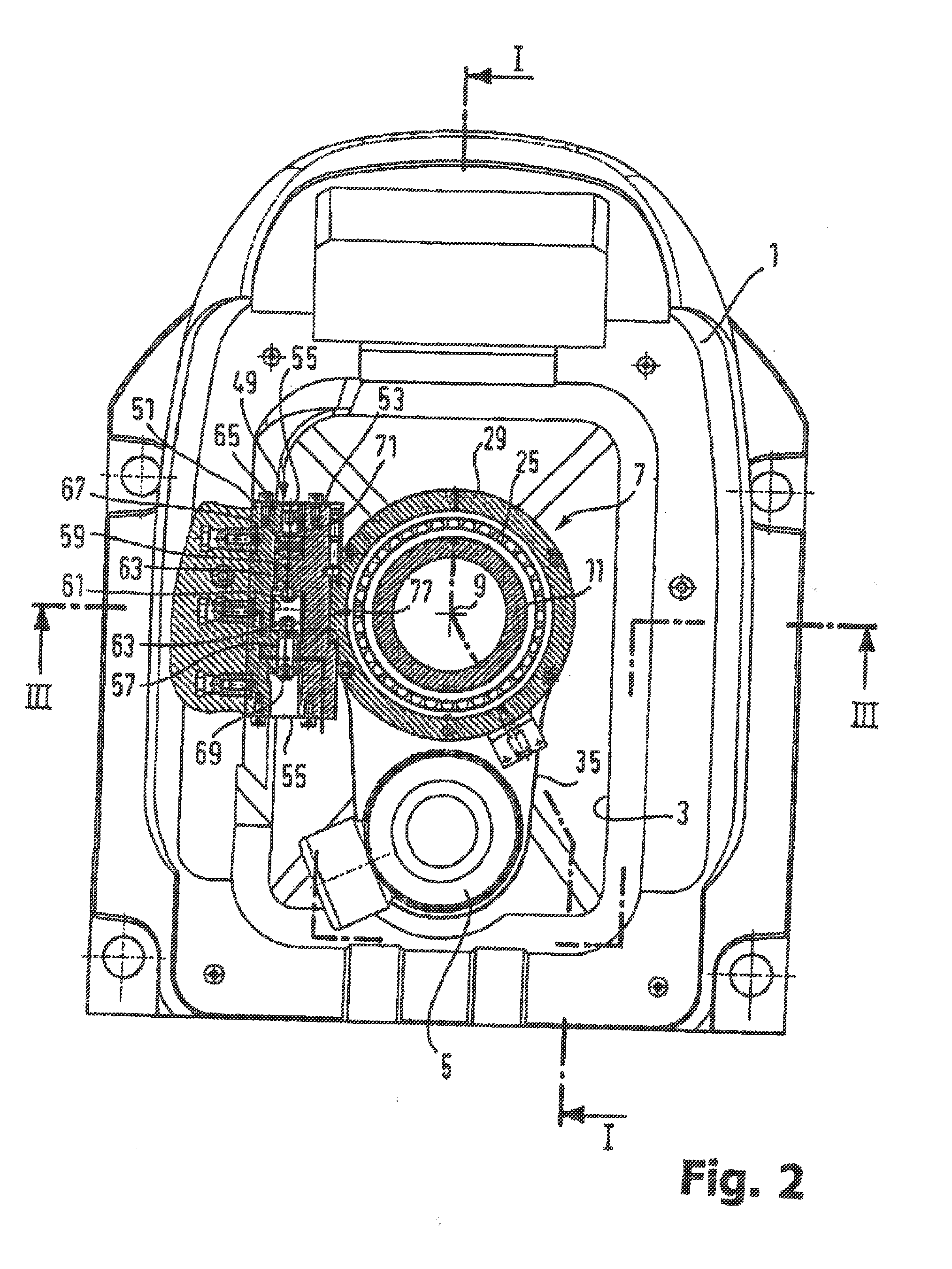Spindle clamp
a technology of spindle clamping and spindle locking mechanism, which is applied in the direction of measuring devices, structural/machine measurement, instruments, etc., to achieve the effect of improving the quality of balancing, increasing the resistance of the spindle locking mechanism to the machining force, and extreme rigid characteristics
- Summary
- Abstract
- Description
- Claims
- Application Information
AI Technical Summary
Benefits of technology
Problems solved by technology
Method used
Image
Examples
Embodiment Construction
[0031]First, a brief general description should be given of the function of the exemplary embodiment presented here for the purpose of further illustrating the invention.
[0032]The balancing machine shown in an overview in the FIGS. 1 and 2 has a housing 1 serving as the base of the machine. In a chamber 3 that is accessible from above, the housing accommodates a spindle unit 7 that is driven by an electric motor 5. The spindle unit 7 has a rotating spindle 11 whose rotation axis 9 is preferably oriented vertically.
[0033]At its upper end, the spindle has a coupling adapter 13, which can be replaced during normal operation and is equipped with a receiving opening centered on the rotation axis 9. This receiving opening is used for connecting a standardized test piece that is to be balanced, which in this case is represented by the tool holder 17. The test piece can be a tool holder, e.g. embodied in the form of a conventional taper or hollow shank taper tool holder (HSK tool holder), o...
PUM
| Property | Measurement | Unit |
|---|---|---|
| width | aaaaa | aaaaa |
| width | aaaaa | aaaaa |
| speed | aaaaa | aaaaa |
Abstract
Description
Claims
Application Information
 Login to View More
Login to View More - R&D
- Intellectual Property
- Life Sciences
- Materials
- Tech Scout
- Unparalleled Data Quality
- Higher Quality Content
- 60% Fewer Hallucinations
Browse by: Latest US Patents, China's latest patents, Technical Efficacy Thesaurus, Application Domain, Technology Topic, Popular Technical Reports.
© 2025 PatSnap. All rights reserved.Legal|Privacy policy|Modern Slavery Act Transparency Statement|Sitemap|About US| Contact US: help@patsnap.com



